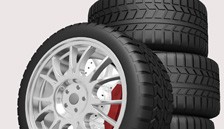New cars are increasingly dependent on accurate steering and suspension set-ups – one pothole can seriously damage the ride and handling, which can be both dangerous and irritating.If a car needs re-setting, technicians need to use equipment that can restore factory specification, otherwise driveability will be compromised, with potentially fatal consequences, while handling and braking won’t be up to scratch.
“There’s no doubt that more sophisticated chassis technology, combined with the growing damage risk from our pothole-ridden roads, has made the importance of correct wheel alignment even more significant,” says Snap-on Equipment general manager Chris Behan.
“Wheel alignment is a complex subject and I hope our new guide simplifies some of the complexity.”
Fellow Snap-on brand John Bean (formerly Balco) has introduced new ergonomic cabinets “developed to meet the needs of professional workshops”, the company says.
“By combining our advanced wheel alignment and balancing technology with stylish, technician-friendly cabinets, we aim to help workshops present themselves as professional and up-to-date operations.
Creating the right image has become an increasingly important factor when it comes to generating customer appeal and repeat business,” Behan says.
Snap-on Equipment product specialist Stewart Levitt says it’s essential to carry out four-wheel alignment checks: “Because a car runs on four wheels it can only be correctly aligned with four-wheel alignment.
This is done by aligning all four wheels in one task, or aligning the front wheels and then referencing the rears.”
On modern cars that use electronic power steering, it’s important that with the front wheels correctly aligned the steering wheel is too, or there could be problems with the diagnostic system.
And as service intervals are increasing to between 9,000 and 12,000 miles, or once every 12 or 18 months, it is essential that every time a car comes in for a service, the wheel alignment is checked.
While cars are more resilient than some pundits might claim, the combination of rougher surfaces and low profile tyres means steering and suspension systems are working hard. A small pothole won’t knock the suspension out, but alignment can change gradually.
And to make money from wheel alignment, it’s important to use good-quality equipment from an OE-approved supplier.
That means that the equipment more accurate and it can do the job more quickly, which leads to faster turnaround times
and more cars being checked during the day.
But it’s also important to buy equipment that has good spares back-up and technical support, as well as training programmes. Training is vital.
There’s the chance to make wheel-alignment equipment work harder by buying a dual-usage set-up that also functions as an MoT lane. It can then pay for itself more quickly.
At the same time it’s important for technicians to talk to their customers about wheel alignment, and why it’s a vital part of a car’s service.
Service reception posters have a role to play – as do leaflets – but Levitt says face-to-face communication is best.
“We carried out a case study and that showed there is a need to educate drivers and sell them the benefits of wheel alignment.
Those benefits include better fuel economy, longer tyre life and increased safety, and that can best be explained by the technician talking with the motorist,” Levitt says.
Top 5 Tips
- Check wheel alignment at every service
- Consider buying dual-function alignment/MoT-test equipment
- Go for a good brand – preferably one with OE approval
- Make sure there’s good spares support and training
- Talk to customers about how vital wheel alignment checks are.
Case study: Pro-Align
A survey by wheel alignment specialist Pro-Align showed that 93% of vehicles had some form of wheel misalignment.
The assessment discovered 85% of the vehicles had front toe or steering wheel misalignment, and 58% had rear toe or thrust line errors, of which 71% were adjustable for rear toe.
This provides workshops with an opportunity to increase profits.
Pro-Align managing director Paul Beaurain says many dealers don’t effectively use the wheel alignment equipment mandated by their franchise standards.
He adds: “To profit from alignment, workshops need to consider speculative alignment. When a customer brings a car in for a service etc, why not offer them a free alignment check?
The customer will be delighted, but the dealer will profit from selling on the adjustments and replacement parts.”
He recommends a dedicated alignment bay, visible to the customer, and employing a dedicated technician with customer-facing skills.















Login to comment
Comments
No comments have been made yet.